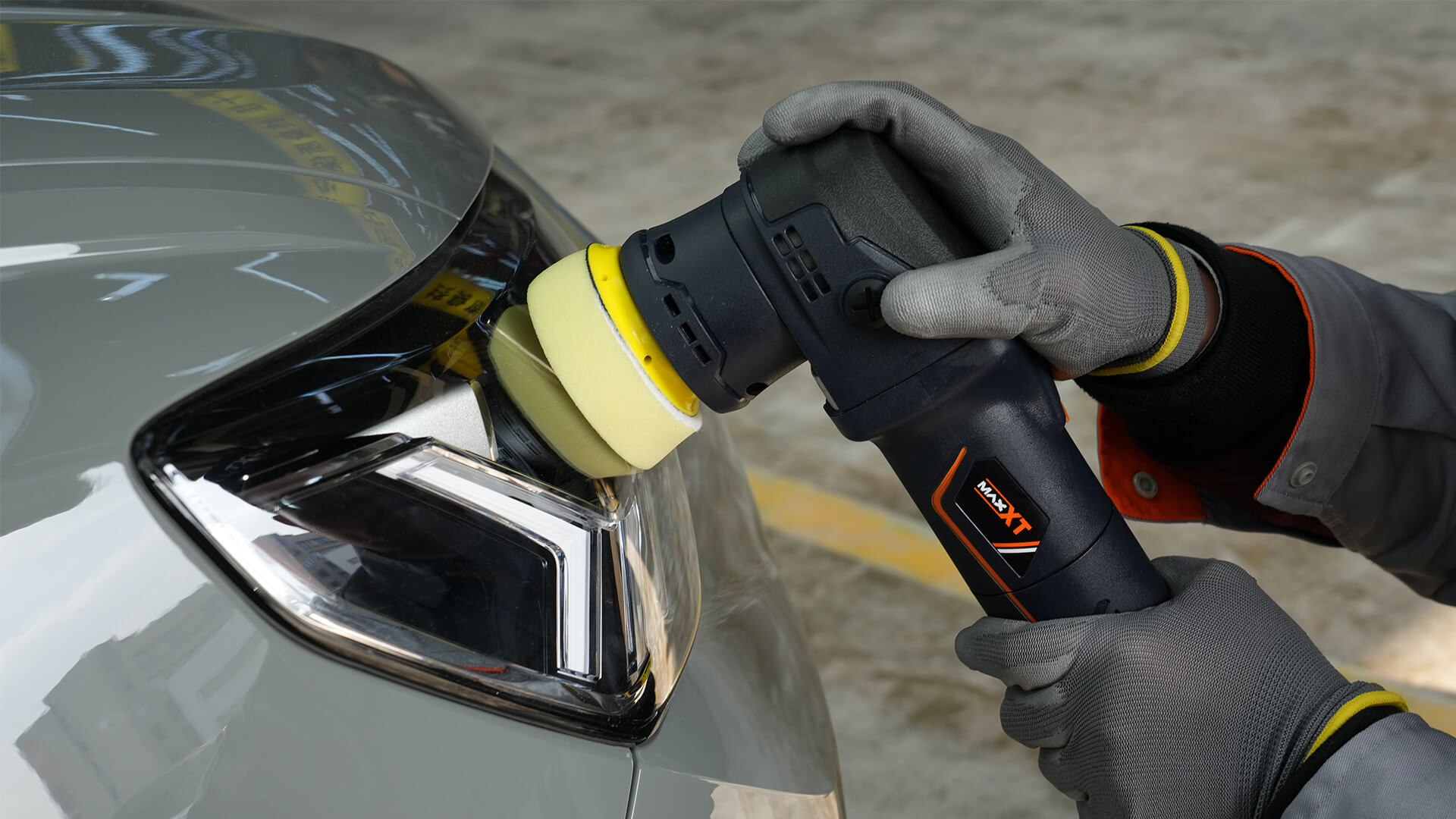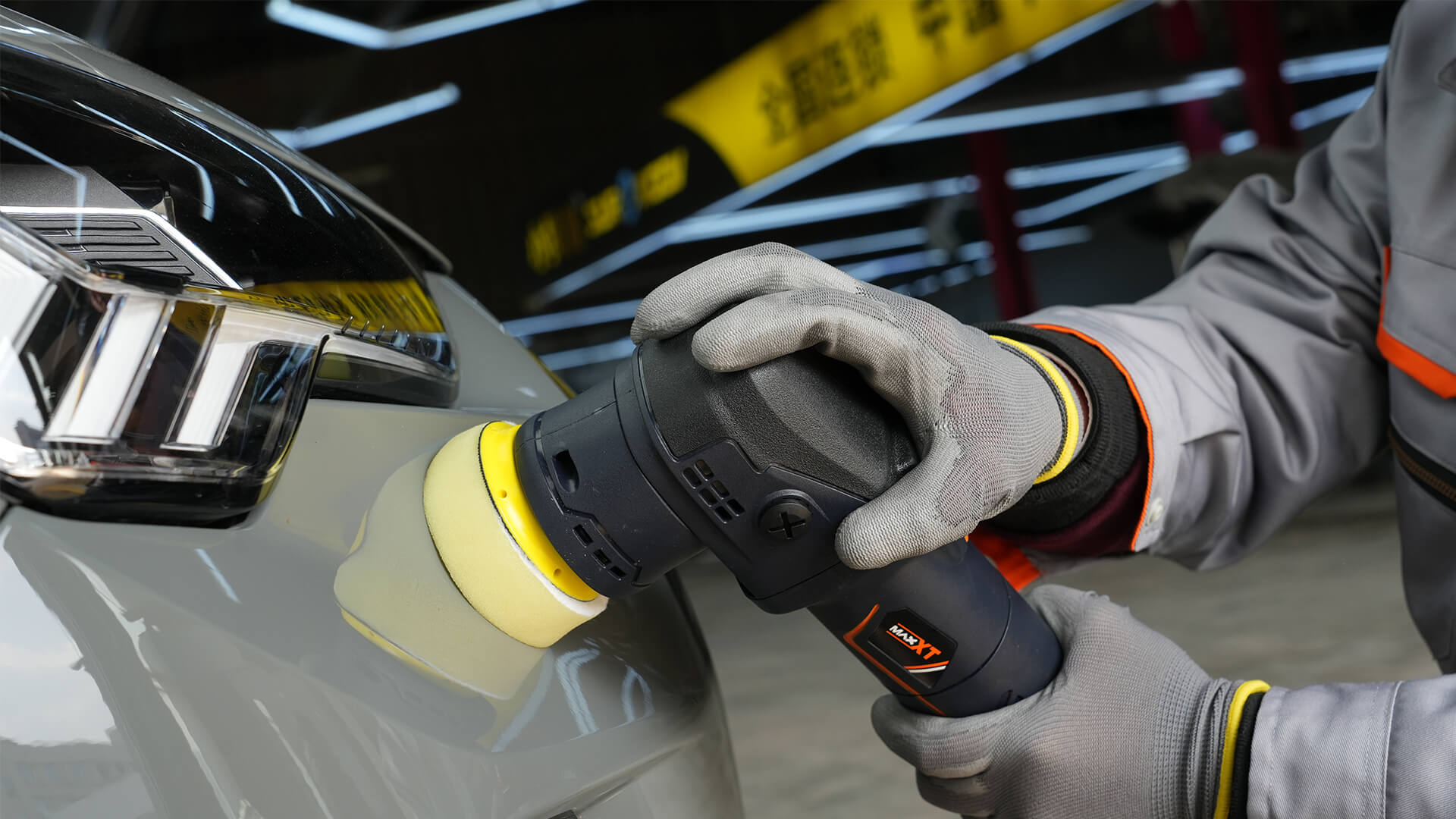In the world of automotive polishing, enthusiasts and professionals alike often find themselves debating the merits of using a rotary polisher versus a random orbital polisher. Both tools serve a vital role in enhancing the appearance and longevity of a vehicle’s paint, but their differences in function and results can make choosing the right polisher for your needs a challenge. In this article, we will examine the key distinctions between these two types of polishers to help you make an informed decision for your car care routine.
Rotary polishers have been a staple in the auto-detailing industry for many years. These powerful machines employ a direct drive motor, causing the polishing pad to rotate continuously in a single direction. This design enables professional detailers to quickly and effectively remove paint defects, oxidation, and scratches, leaving a smooth, glossy finish. However, the high level of skill required to operate a rotary polisher and the risk of paint damage if used improperly may intimidate some users.
On the other hand, random orbital polishers, also known as dual-action polishers, have gained popularity among both professionals and DIY enthusiasts for their user-friendly design. Unlike rotary polishers, these tools utilize an oscillating motion, which provides a more gentle and even polishing experience that minimizes the risk of paint damage. Random orbital polishers may require a bit more time to achieve similar results as rotary polishers but offer greater control and safety for users.
Understanding Automotive Polishing
Automotive polishing is a critical step in maintaining the appearance and protection of vehicle paint. It involves the use of abrasive compounds and polishing tools to eliminate imperfections on the paint surface, such as swirls, scratches, and oxidation. There are two popular types of polishing machines used for automotive finishing: the rotary polisher and the random orbital polisher. Both of these machines serve a similar purpose, but their operation and results can differ significantly.
The rotary polisher, also known as a high-speed rotary buffer, features a direct-drive motor. This means that the polishing pad rotates on a single axis, providing continuous and even pressure on the paint surface. With the proper use of cutting and polishing compounds, this type of machine can efficiently remove paint defects and restore the paint’s gloss and smoothness. However, rotary polishers can generate a significant amount of heat and can be challenging to control, especially for inexperienced users. This increases the risk of paint burns or holograms, especially when making prolonged contact on a single spot.
On the other hand, the random orbital polisher, often referred to as the dual-action (DA) polisher, operates by a combination of a rotating and an oscillating motion. This ensures that the polishing pad never concentrates on one area, reducing the risk of paint damage from excessive heat generation. The random orbital polisher is considered the more user-friendly option, especially for beginners, since it is gentler on the paint surface and offers a lower risk of causing damage.

When deciding between a rotary polisher and a random orbital polisher, consider factors such as skill level, paint condition, and desired results. Rotary polishers deliver faster and more aggressive paint correction, making them ideal for heavily damaged paint or working on harder clear coats. However, they require experience and proper technique to avoid potential damage. Random orbital polishers provide a safer and easier-to-use option, suitable for light to moderate paint imperfections and routine maintenance. While they may take more time to achieve desired results, they offer a higher margin of error, making them a popular choice for DIY enthusiasts and professionals alike.
What is a Rotary Polisher?
A rotary polisher is a popular power tool used for automotive polishing and paint correction. It works by spinning a polishing pad in a circular motion to remove paint imperfections and produce a smooth, shiny finish.
Rotary polishers are equipped with a powerful motor and adjustable speed settings, allowing users to precisely control the polishing process. They are known for their ability to remove heavy paint defects, such as scratches, oxidation, and swirl marks, quickly and effectively. However, these tools can also generate heat, which may cause paint damage if not used properly.
In contrast to random orbital polishers, which use both circular and oscillating movements, rotary polishers solely use circular rotations. This results in a more aggressive polishing action, making these tools well-suited for experienced users. Beginners are often encouraged to use random orbital polishers, as they are more forgiving and less likely to damage the paintwork.
Although rotary polishers have their advantages, they also require a higher level of skill and experience to use safely. Proper technique and careful handling are essential to avoid paint burns or holograms – a common problem caused by improper usage. Additionally, using the right type of polishing pads and compounds is crucial to achieve desired results.
To summarize, a rotary polisher is an efficient and powerful tool for automotive polishing and paint correction. Its circular motion effectively removes paint imperfections and delivers a smooth, polished finish. However, it demands careful handling and skillful technique to avoid potential paint damage.
What is a Random Orbital Polisher?
UM random orbital polisher is a type of power tool used to polish and finish automotive surfaces. It works by combining the motions of rotation and oscillation, which enables the user to remove paint imperfections, such as swirl marks, scratches, and oxidation, with ease. This type of polisher is popular among both professionals and enthusiasts for a number of reasons.
Firstly, random orbital polishers are known for their ease of use. They are designed with a dual-action mechanism, which reduces the risk of damaging the paintwork. This feature makes them suitable for novices and experts alike, as the motion is less aggressive compared to rotary polishers.
The random orbital polisher’s versatility also contributes to its popularity. With the appropriate pads and polishing compounds, these polishers can be used to restore a variety of surfaces such as paint, metal, and glass. This makes them a valuable tool to have in one’s garage or workshop.
Moreover, random orbital polishers are typically energy-efficient and generate less heat compared to rotary polishers. This lower heat output helps protect the finish of the vehicle and prevents overworking or burning the paint. This is especially helpful when working on delicate or temperature-sensitive paint surfaces.
In conclusion, a random orbital polisher is a versatile and user-friendly tool for automotive polishing. It is suitable for both beginners and professionals, offering impressive results without the risk of damaging the vehicle’s surface.
Comparing Rotary and Random Orbital Polishers
Performance
Rotary polishers offer a higher level of correction power, allowing them to remove deeper scratches and imperfections more quickly. With their direct drive mechanism, they provide consistent power and can achieve higher speeds. However, random orbital polishers are known for their dual-action movement, which reduces the risk of paint damage and provides a more uniform finish.
Facilidade de uso
Beginners and professionals alike might prefer random orbital polishers since they are typically easier to handle. Thanks to their random motion, these polishers reduce the risk of creating swirl marks or damaging the paint. Rotary polishers, on the other hand, require more skill to achieve great results without causing harm to the vehicle’s surface.
Price
Random orbital polishers are usually more affordable than rotary polishers, making them an attractive choice for hobbyists and DIY enthusiasts. However, professionals may prefer investing in a rotary polisher for its greater power and ability to handle tougher tasks. It’s essential to keep in mind that the quality and features of a polisher will impact its price.
| Tipo | Price Range |
| Random Orbital | $50 – $300 |
| Rotary Polisher | $100 – $600 |
Qualidade de acabamento
Tanto polidores orbitais rotativos quanto aleatórios podem fornecer excelentes resultados quando usados corretamente. Polidores rotativos podem fornecer um corte mais agressivo para tinta muito arranhada ou oxidada, mas eles exigem mais habilidade para evitar causar danos. Polidores orbitais aleatórios são conhecidos por sua capacidade de produzir um acabamento sem redemoinhos e sem hologramas, tornando-os ideais para uma variedade de tarefas, incluindo aplicação de cera. É importante considerar suas necessidades e habilidades específicas ao escolher o melhor polidor para seus projetos.

Fazendo a escolha certa
Quando se trata de polimento automotivo, escolher entre uma polidora rotativa e uma polidora orbital aleatória é essencial. Cada tipo de polidora tem seus benefícios e desvantagens exclusivos, e entender essas distinções garantirá que você faça a escolha certa.
Polidores rotativos são frequentemente a escolha preferida dos detalhistas profissionais porque fornecem resultados rápidos e poderosos. Eles têm um sistema de acionamento direto, o que significa que a almofada gira em um único eixo. Este design permite que eles removam defeitos de pintura, como arranhões e oxidação, de forma mais eficaz. No entanto, polidoras rotativas exigem um nível de habilidade maior para controlar e podem gerar calor excessivo, potencialmente levando a queimaduras de tinta se não forem usadas corretamente.
Some advantages of rotary polishers are:
⚫ Faster paint correction
⚫ Melhor na remoção de arranhões profundos e oxidação
⚫ Preferido por detalhistas profissionais
Polidores orbitais aleatórios são conhecidos por sua versatilidade e natureza amigável para iniciantes. Eles combinam movimentos giratórios e oscilantes, o que ajuda a distribuir a ação de polimento uniformemente e reduz o risco de danos à pintura. Essa ação dupla o torna ideal para entusiastas que são novos no polimento ou para aqueles que buscam manter o acabamento do veículo sem arriscar danos.
Algumas vantagens dos polidores orbitais aleatórios são:
⚫ Mais seguro para iniciantes devido ao risco reduzido de queimaduras de tinta
⚫ Menos agressivo, ideal para manutenção de acabamentos de pintura
⚫ Movimento de dupla ação para distribuição uniforme do polimento
Em resumo, escolher entre uma polidora rotativa e uma polidora orbital aleatória depende principalmente do nível de habilidade do usuário e dos resultados desejados. Para profissionais ou aqueles que buscam uma correção de pintura mais rápida, uma polidora rotativa é uma escolha adequada. Enquanto isso, iniciantes e aqueles que querem uma polidora segura e versátil para manter o acabamento do carro devem optar por uma polidora orbital aleatória.
